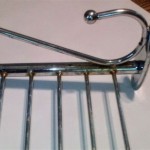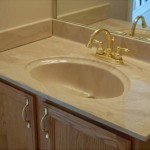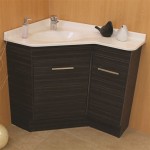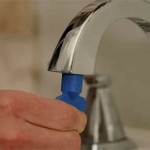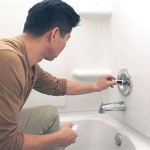How Can I Hide My Bathroom Pipes?
Exposed bathroom pipes can detract from an otherwise aesthetically pleasing space. While plumbing functionality is essential, its visual impact doesn't have to be negative. Numerous methods exist to conceal pipes, ranging from simple cosmetic solutions to more involved structural alterations. Selecting the appropriate approach depends on factors such as budget, skill level, the location of the pipes, and desired aesthetic.
Boxing In Pipes: A Functional and Versatile Solution
Boxing in pipes represents a popular and practical method for concealing them. This involves constructing a structure around the pipes, effectively creating a false wall or enclosure. The boxing can be customized to blend seamlessly with the existing bathroom decor, often painted to match the wall color or finished with tiles to complement the surrounding surfaces.
Materials commonly used for boxing include MDF (Medium-Density Fiberboard), plywood, and even plasterboard. MDF offers a smooth surface ideal for painting, while plywood provides greater strength and durability. Plasterboard, while requiring plastering and painting, integrates well with existing walls, offering a seamless finish.
The construction process involves creating a framework using timber battens. These battens are fixed to the wall and floor, forming the skeleton of the box. The chosen material (MDF, plywood, or plasterboard) is then cut to size and attached to the framework, creating the enclosure. It's crucial to ensure accurate measurements and precise cuts to achieve a neat and professional appearance.
Access panels are a vital consideration when boxing in pipes. Plumbing repairs and maintenance are inevitable, so providing easy access to the pipes is essential. Incorporating a removable panel or a hinged door into the boxing design allows for future access without requiring the complete disassembly of the enclosure. Strategically placing the access panel in a discreet location minimizes its visual impact.
The dimensions of the boxing should be carefully considered. It needs to be large enough to completely enclose the pipes, while also being mindful of minimizing its intrusion into the bathroom space. Overly bulky boxing can make a small bathroom feel even smaller. A streamlined design that closely follows the contours of the pipes is generally preferable.
Ventilation is another factor to consider, especially in humid environments. Condensation can accumulate within the boxing, potentially leading to mold growth. Incorporating ventilation holes or gaps can help to prevent moisture buildup and maintain a healthy environment within the enclosure.
Utilizing Furniture: Integrating Pipes into Existing Decor
Another effective method for concealing bathroom pipes involves strategically using furniture. Vanity units, cabinets, and even freestanding storage solutions can be employed to effectively hide pipes while simultaneously providing valuable storage space. This approach is particularly suitable for concealing pipes located beneath the sink or near the toilet.
Vanity units with enclosed cabinets are a popular choice for concealing under-sink plumbing. The doors and drawers of the vanity unit completely hide the pipes from view, creating a clean and organized aesthetic. When selecting a vanity unit, it's important to ensure that the internal space is sufficient to accommodate the existing plumbing without compromising storage capacity. Some vanity units are specifically designed with cutouts or channels to accommodate pipes.
Freestanding cabinets or shelving units can also be strategically positioned to conceal pipes running along walls or in corners. These units can be used to display decorative items, toiletries, or towels, effectively diverting attention away from the exposed plumbing. The furniture should be chosen to complement the overall bathroom decor in terms of style, color, and materials.
Consider the depth and placement of the furniture in relation to the pipes. The furniture needs to be deep enough to completely conceal the pipes without protruding excessively into the room. The placement should also be carefully considered to ensure easy access to the pipes for maintenance purposes. Leave a small gap between the furniture and the wall to allow for ventilation and prevent moisture buildup.
Custom-built furniture offers the greatest flexibility in terms of pipe concealment. A carpenter can create a bespoke cabinet or storage unit that is specifically designed to accommodate the existing plumbing configuration. This allows for a seamless integration of the pipes into the furniture, creating a truly custom and aesthetically pleasing solution. Custom furniture can be tailored to match the exact dimensions of the space and the desired aesthetic.
When using furniture to conceal pipes, it's also important to consider the impact on accessibility. Ensure that the furniture doesn't obstruct access to essential plumbing components, such as shut-off valves or drain cleanouts. These components need to be easily accessible for maintenance and repairs. Incorporate access panels or removable sections into the furniture design if necessary.
Decorative Solutions: Camouflaging Pipes with Creative Design
In some instances, directly hiding the pipes may not be feasible or desirable. In such cases, employing decorative solutions to camouflage or accentuate the pipes can be an effective alternative. This approach focuses on transforming the pipes from an eyesore into a design feature, using paint, coverings, or other decorative elements.
Painting the pipes is a simple and inexpensive way to minimize their visual impact. Choose a paint color that matches the wall color to help the pipes blend into the background. Alternatively, select a contrasting color to make the pipes a deliberate design element. Consider using metallic paints, such as copper or gold, to create a more decorative and eye-catching effect. Ensure that the paint is suitable for metal surfaces and will withstand the humid environment of a bathroom. Thoroughly clean and prime the pipes before painting to ensure proper adhesion and a long-lasting finish.
Pipe coverings, such as pipe sleeves or wraps, offer another option for concealing or enhancing the appearance of pipes. These coverings are available in a variety of materials, including chrome, brass, plastic, and even fabric. Chrome and brass coverings provide a sleek and modern look, while plastic coverings are more budget-friendly. Fabric wraps can add a touch of texture and color to the pipes. Choose a covering that is appropriate for the size and shape of the pipes and that complements the overall bathroom decor.
Introducing natural elements can also help to camouflage pipes. Climbing plants, such as ivy or pothos, can be trained to grow along pipes, creating a natural and visually appealing screen. Artificial plants can also be used for a low-maintenance alternative. The greenery will help to soften the appearance of the pipes and create a more relaxing and inviting atmosphere in the bathroom.
Using decorative tiles or mosaics to cover the pipes can transform them into a unique and artistic feature. This approach is particularly suitable for pipes that are exposed in a prominent location. The tiles can be arranged in a pattern or mosaic design to create a visually stunning effect. Choose tiles that complement the existing bathroom decor in terms of color, style, and materials. This method requires more skill and effort, but the result can be a truly one-of-a-kind and eye-catching design element.
Creating a focal point near the pipes can draw attention away from them. A strategically placed piece of artwork, a decorative mirror, or a statement lighting fixture can effectively distract the eye and minimize the visual impact of the exposed plumbing. The focal point should be chosen to complement the overall bathroom decor and create a sense of balance and harmony.
Ultimately, the best method for hiding bathroom pipes depends on individual preferences, budget, and the specific characteristics of the bathroom. By carefully considering the various options and implementing a creative and well-planned approach, it is possible to transform exposed pipes from an eyesore into a seamless part of the bathroom design.

An Interview With A Master Plumber And 3 Creative Ways To Hide Exposed Pipes Nir Plumbing

How To Hide Plumbing In Your Bathroom Victoriaplum Com

6 Creative Ways To Hide Exposed Pipes By Bathroom Experts Showers You

How To Hide Pipes On A Small Floating Si Bunnings Work Community

Hiding Pipes In Bathroom

Boxing In Bathroom Pipework Guru

How To Hide Plumbing In Your Bathroom Victoriaplum Com

How To Cover Pipes In A Bathroom Dans Le Lakehouse

Help Hiding Pipes In Downstairs Toilet Houzz

How To Hide Plumbing Pipes In Your Bathroom Big
Related Posts

